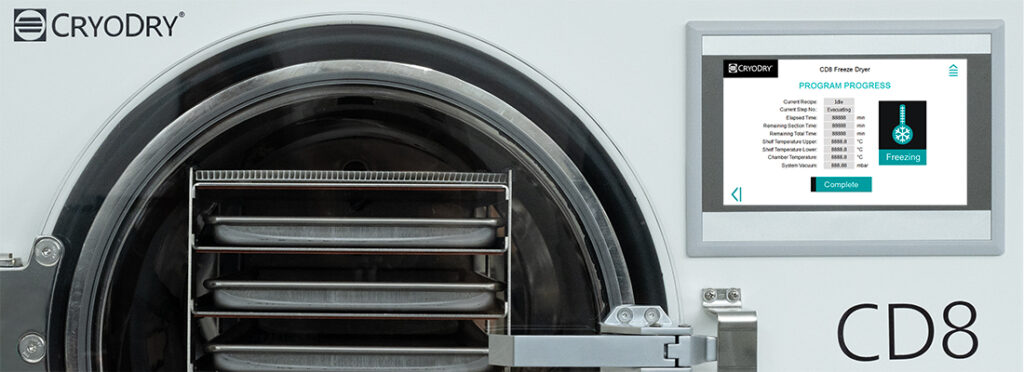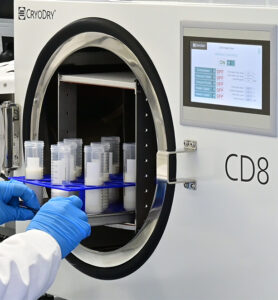Info, Knowledge Base
Hysteresis Control in the CryoDry® CD8 Freeze Dryer

Hysteresis is a common phenomenon that occurs in vacuum control systems, particularly in those that involve temperature and pressure regulation. In this blog post, we will explore what hysteresis is, how it affects vacuum control, and how CryoDry has incorporated hysteresis control to improve speed and control accuracy in their CryoDry CD8 benchtop freeze dryer.
Hysteresis is a lagging effect that occurs when the output of a control system lags behind the input signal. This lag is due to the inherent inertia of the system and is often described as the system’s resistance to change. In vacuum control systems, hysteresis is a significant issue that affects the accuracy and stability of the system.

In a vacuum control system, the hysteresis effect can be seen in the pressure control mechanism. When a pressure change occurs in the vacuum chamber, the control system needs to adjust the pumping speed to maintain the desired pressure. However, because of the system’s inertia, there is a delay between the pressure change and the change in pumping speed to compensate. This delay causes the vacuum pump’s speed to overshoot or undershoot the desired value, resulting in pressure fluctuations that can be harmful to the vacuum chamber and the product inside.
The CryoDry CD8 benchtop freeze-dryer, has incorporated hysteresis control to improve the speed of the drying process and control accuracy. The CD8’s hysteresis control system enables precise control of the vacuum pump through the use of a low displacement, control valve – reducing pressure fluctuations and optimizing vacuum quality. The CD8’s system uses advanced algorithms to account for system dynamics and predict the system’s response to changes in the input signal, providing faster and more accurate control of the vacuum chamber’s pressure and temperature.
The CD8’s hysteresis control also enables the system to respond quickly to changes in the input signal, improving the drying process’s speed and reducing cycle times. This feature is especially important in applications where time is critical, such as in the production of temperature-sensitive pharmaceuticals or biologics.
In conclusion, hysteresis is a common issue that affects vacuum control systems, particularly those that involve temperature and pressure regulation. CryoDry CD8 has incorporated hysteresis control to improve the speed and control accuracy of the drying process. By implementing advanced algorithms and precise control of the vacuum pump, the CD8 can provide faster and more accurate control of the vacuum chamber’s pressure and temperature, leading to better vacuum quality and shorter cycle times.

